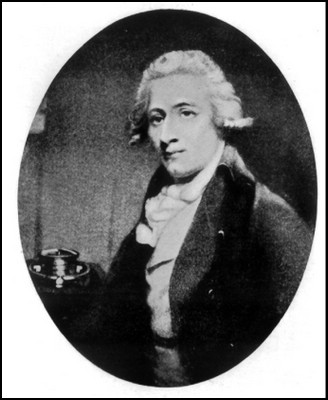- Thomas Earnshaw
Infobox Person
name = Thomas Earnshaw

image_size = 160px
caption =
birth_date = birth date|1749|2|4|df=y
birth_place =Ashton-under-Lyne
death_date = death date and age|1829|3|1|1749|2|4|df=y
death_place =London
occupation = Watchmaker
spouse =
parents =
children =Thomas Earnshaw (born
4 February 1749 inAshton-under-Lyne - died1 March 1829 inLondon ) was an Englishwatchmaker who first simplified the process ofmarine chronometer production, making them available to the general public. He's also known for his improvements to the transitclock at theRoyal Greenwich Observatory in London and his invention of the chronometerescapement and the bimetallic compensation balance. [http://www.britannica.com/eb/article-9031721 Thomas Earnshaw] at Encyclopaedia Britannica Online.]In 1783 he invented and patented the spring detent
escapement which became standard in marine chronometers [http://www.antique-watch.com/ref/e_earn.html Details on Earnshaw's spring indent escapement] ] (John Arnold invented a similar escapement in 1779). In 1805, Earnshaw and Arnold were granted awards by theBoard of Longitude for their improvements to chronometers; Earnshaw received £2500 and John Arnold's son John Roger Arnold received £1672. The bimetallic compensation balance and the spring detent escapement in the forms designed by Earnshaw have been used essentially universally inmarine chronometer s since then, and for this reason Earnshaw is generally regarded as the "father of the chronometer". [cite book | author=Gould, Rupert T. | title=The Marine Chronometer. Its History and Development | pages=116-128 | location=London | publisher=J. D. Potter | year=1923 | id=ISBN 0-907462-05-7]Although, he was principly a watchmaker, he didn't shy away from building clocks. When asked by
Nevil Maskelyne , he produced a clock for theArmagh Observatory , which is recognised by horologists today as one of the world's most important clocks.Fact|date=February 2007This clock incorporated Earnshaw's new design of escapement and had a number of novel features including an air-tight case (designed to reduce dust and draughts). It was highly praised by
John Thomas Romney Robinson in the 19th century who at that time believed it to be the most accurate clock in the world. In 1794, its purchase price was £100 and Earnshaw charged £100 to travel with it to Armagh and set it up in the new Observatory. Information on [http://star.arm.ac.uk/history/instruments/Earnshaw-transit-clock.html Earnshaw's first clock] at the Armagh Observatory website.]The Observatory also purchased Earnshaw's second clock Information on [http://www.arm.ac.uk/history/instruments/Earnshaw-clock.html Earnshaw's second clock] at the Armagh Observatory website.] which was operated at sidereal rate with Edward Troughton's Equatorial Telescope.
References
Wikimedia Foundation. 2010.
